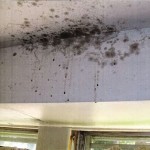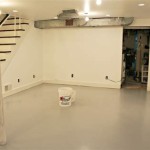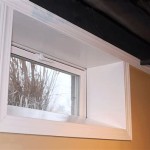Understanding the Gap Between Basement Wall and Framing Floor
When constructing a basement, the gap between the basement wall and the framing floor is a crucial aspect that requires careful attention. This gap, often referred to as the "wall-to-floor gap," plays a significant role in the structural integrity, insulation, and overall functionality of the basement. It's essential to have a clear understanding of how this gap should be managed to ensure a well-built and comfortable basement space.
Structural Integrity
The wall-to-floor gap is essential for maintaining the structural integrity of the basement. The gap allows for the expansion and contraction of the framing floor due to changes in temperature and humidity. When the floor expands, the gap prevents it from pushing against the basement wall, which can lead to cracks and structural damage. Conversely, when the floor contracts, the gap ensures that the wall remains securely attached to the floor framing. This gap also allows for the proper installation of the sill plate, which is a crucial component of the basement floor framing that transfers the weight of the upper floors to the foundation.
Insulation and Moisture Control
The wall-to-floor gap is critical for effective insulation and moisture control in the basement. The gap allows for the installation of insulation, either rigid foam boards or fiberglass batts, between the wall and the floor framing. This insulation helps reduce heat loss in the winter and heat gain in the summer, creating a more comfortable and energy-efficient basement. The gap also helps prevent moisture from entering the basement. Moisture can penetrate through the basement wall due to rain, snow, or ground seepage. The gap allows for the installation of a moisture barrier, such as polyethylene sheeting, which prevents moisture from migrating into the basement. This helps create a more dry and healthy environment.
Ventilation and Airflow
The wall-to-floor gap is also crucial for proper ventilation and airflow in the basement. The gap allows for the movement of air between the basement wall and the floor framing. This airflow helps to prevent mold and mildew growth, which can be a common problem in basements due to high humidity levels. The gap also helps to dissipate any moisture that may penetrate the basement wall, preventing it from accumulating and causing damage. Proper ventilation also helps to reduce the risk of radon gas accumulation in the basement, which is a known health hazard.
A well-managed wall-to-floor gap is essential for a structurally sound, insulated, and healthy basement. The gap allows for the expansion and contraction of the framing floor, provides space for insulation and moisture control, and facilitates ventilation and airflow. By properly managing this gap, homeowners can ensure that their basement is a safe, comfortable, and functional space.

Floating Partition Walls Basement Asktooltalk Com

How To Frame Unfinished Basement Walls Family Handyman
Need Definitive Gui On How To Insulate Exterior Basement Wall With An Existing Air Gap Diy Home Improvement Forum

How To Frame A Basement

Home Inspection Shows Gaps Under Sills Concerning Foundation Systems Forum The Inspector S Journal

How Do I Remodel My Basement When Don T Know To Frame Drywall Repairman Water Damage Repair

How To Finish A Basement Diy

What The Heck Are Floating Walls Beams To Basements Contractors

What Is The Best Way To Depict Floating Hanging Walls Building Codes And Compliance Chieftalk Forum

Finishing My Basement Framing Floating Walls
See Also








